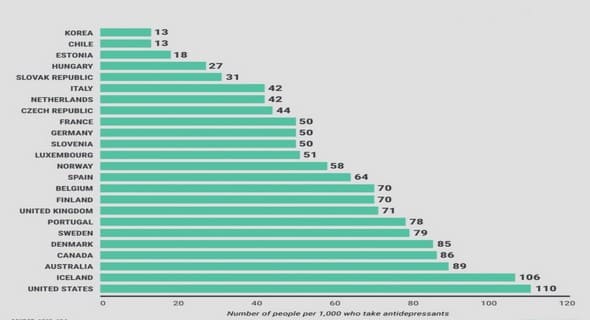(Downloads - 0)
For more info about our services contact : help@bestpfe.com
Table of contents
Introduction
The Thesis Context and the FUTURPROD Project
Optimisation, Design and CAD in the ALM Framework
Thesis Objectives
Thesis Outline
Introduction
Contexte de la thèse et le projet FUTURPROD
Intégration de l’optimisation, de la conception et de la CAO
Objectifs de la thèse
Structure de la thèse
1 Literature Review
1.1 Introduction to the Literature Review
1.2 The Additive Layer Manufacturing Technology
1.2.1 A classification of ALM processes
1.2.2 The Selective Laser Melting Technology
1.3 Topology Optimisation Methods
1.3.1 Density-Based Methods
1.3.2 The Level-Set Method
1.4 Implementation of Manufacturing Constraints in Topology Optimisation
1.5 Conclusions on the Literature Review
1 Revue de la littérature
1.1 Introduction de la revue de la littérature
1.2 La technologie de fabrication additive par couche (Additive Layer Manufacturing)
1.2.1 Classification des processus ALM
1.2.2 La technologie de fusion sélective par laser (SLM)
1.3 Méthodes d’Optimisation Topologique
1.3.1 Méthodes basées sur la densité
1.3.2 La Méthode Level-Set
1.4 Implémentation des contraintes de l’ALM dans l’OT
1.5 Conclusions de la revue de la littérature
2 Fundamentals of Geometrical Modelling
2.1 Introduction to the Fundamentals of Geometrical Modelling
2.2 The NURBS curves theory
2.3 The NURBS surfaces theory
2.4 The NURBS hyper-surfaces theory
2.5 Conclusions on the NURBS entities theory
2 Principes fondamentaux de la modélisation géométrique
2.1 Introduction aux Principes fondamentaux de la modélisation géométrique
2.2 La théorie des courbes NURBS
2.3 La théorie des surfaces NURBS
2.4 La théorie des hyper-surfaces NURBS
2.5 Conclusions sur la theorie des entites NURBS
3 Optimisation Methods and Algorithms
3.1 Introduction to Optimisation Methods
3.2 Deterministic Methods for CNLPP
3.2.1 Generalities on Deterministic Methods
3.2.2 Optimality Conditions for CNLPP
3.2.3 Deterministic Algorithms for CNLPP
3.3 Meta-heuristic Methods for CNLPP
3.3.1 Generalities on Meta-heuristics
3.3.2 The Genetic Algorithm BIANCA
3.3.3 The MATLAB version of BIANCA
3.4 Conclusions on Optimisation Methods and Algorithms
4 A NURBS-based Topology Optimisation Algorithm
4.1 Introduction
4.2 Mathematical Formulation of the NURBS-based Topology Optimisation Method
4.3 The algorithm SANTO (SIMP And NURBS for Topology Optimisation)
4.4 Results Discussion
4.4.1 The 2D benchmark
4.4.2 Results for 2D problems: sensitivity to the NURBS surface degrees, number of control points and weights
4.4.3 Results for 2D problems: comparison between classical and NURBSbased SIMP approaches
4.4.4 Results for 2D problems: in uence of Non-Design Regions
4.4.5 Results for 2D problems: in uence of a symmetry constraint
4.4.6 The 3D benchmarks
4.4.7 Results for 3D problems: sensitivity to the NURBS hyper-surface degrees, number of control points and weights
4.4.8 Results for 3D problems: comparison between classical and NURBSbased SIMP approaches
4.5 Conclusions and Perspectives on the NURBS-based TO Algorithm
5 Geometrical Constraints Implementation in the Framework of the NURBS- based Topology Optimisation Algorithm
5.1 Introduction to Geometrical Constraints in Topology Optimisation
5.2 Poulsen’s Formulation of the Minimum Length Scale Constraint
5.2.1 Mathematical Statement of Poulsen’s Minimum Length Scale constraint
5.2.2 Poulsen’s Minimum Length Scale constraint: numerical results
5.3 Minimum Length Scale control in the NURBS-based TO Algorithm
5.3.1 Minimum length scale resulting from B-Spline entities
5.3.2 Some remarks about the proposed approach
5.3.3 The effects of the NURBS weights on the minimum length scale
5.3.4 Results: Minimum length scale in 2D
5.3.5 Results: Minimum length scale in 3D
5.3.6 The effects of a non-uniform knot vector on the minimum length scale
5.4 The Maximum Length Scale
5.4.1 Mathematical Statement of the Maximum Length Scale constraint
5.4.2 Results: Maximum Length Scale in 2D
5.4.3 Results: Maximum Length Scale in 3D
5.5 The Minimum Curvature Radius
5.5.1 Mathematical Statement of the Minimum Curvature Radius constraint
5.5.2 Results on the application of the Minimum Curvature Radius constraint
5.6 Conclusions and Perspectives on Geometrical Constraints in the NURBSbased TO algorithm
6 Eigenvalue Problems in the Framework of the NURBS-Based Topology Optimisation Algorithm
6.1 Introduction
6.2 Eigenvalue Buckling Problems
6.2.1 First buckling load maximisation in the classic SIMP framework
6.2.2 Mathematical formulation of buckling problems in the NURBSbased TO algorithm
6.2.3 Discussion on numerical aspects
6.2.4 Results
6.3 Eigen-frequencies Problems
6.3.1 First Eigen-frequency maximisation in the classic SIMP framework 235
6.3.2 Mathematical formulation of eigen-frequencies problems in the NURBSbased TO algorithm
6.3.3 Discussion on numerical aspects
6.3.4 Results
6.4 Conclusions and Perspectives
7 General Fitting Techniques for Curves and Surfaces Reconstruction
7.1 Introduction to Curve and Surface Reconstruction
7.2 A General Hybrid Optimisation Strategy for Curve Fitting in the NURBS Framework
7.2.1 Mathematical Formulation of the Curve Fitting Problem
7.2.2 Numerical Strategy
7.2.3 Studied Cases and Results for curve tting
7.3 Surface Reconstruction in the NURBS Framework
7.3.1 Surface Parametrisation
7.3.2 Surface Fitting
7.3.3 Results on Surface Fitting
7.4 Conclusions and Perspectives on Approximation Problems
General Conclusions
Perspectives of this Thesis
Conclusions et Perspectives



